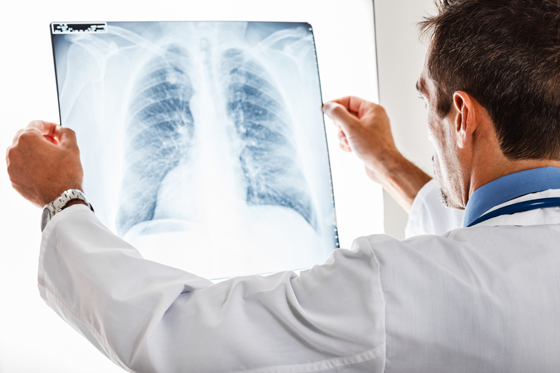New lung cancer model identifies who to screen
A new screening tool — the HUNT Lung Cancer Risk Model — predicted lung cancer with almost 88% accuracy, according to findings recently published in EBioMedicine.
“Several multivariable risk prediction models have been proposed to improve the selection of people for [lung cancer] screening,” researchers wrote.
“However, these models and corresponding studies also have a variety of potential issues such as age cutoffs, inclusion of mainly heavy smokers, restricted and/or empirical inclusion of predictors and listwise exclusion of cases with missing data, all of which call into question the transferability of these models to clinical practice,” they added.
To come up with a new model that removed those issues, researchers reviewed data from 65,237 residents of Norway aged older than 20 years during 1995 to 1997. After a median of 15.2 years, 583 had lung cancer and of these, 552 were ever smokers. Researchers used this group to develop a model of risk factors to determine lung cancer risk. They validated the model in a group of 45,341 ever-smokers, of whom 675 had been diagnosed with lung cancer after a median follow-up of 11.6 years.
The model included five previously known risk factors — age, BMI, number of cigarettes smoked daily, pack years, and years since the person quit — as well as two new independent risk factors for lung cancer: periodic daily cough (beta coefficient = 0.4059355, P < .001) and number of hours exposed to indoor smoke daily (beta coefficient = 0.1663201, P < .002).
Researchers found that their formula including the beta coefficients of these seven risk factors revealed a 0.879 concordance index (95% CI, 0.866-0.891) with an area under the curve of 0.87 (95% CI, 0.85-0.89) within 6 years, and that 22% of ever-smokers would require screening to identify 81% to 85% of all lung cancers in that same period of time.

“The method can reduce the number of people exposed to radiation from unnecessary CT scans, and maximize identification of persons with true risk,” Oluf Dimitri Røe, MD, PhD, a senior oncologist at the Norwegian University of Science and Technology, added in a press release. “It is also the first model that can accurately predict lung cancer in light smokers, younger people, and people who quit smoking many years before.” – by Janel Miller
Disclosures: The authors report no relevant financial disclosures.

